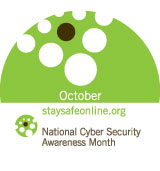The results of an identity theft study performed by Javelin Strategy and Research have been released and no surprisingly, show that instances of identity theft have actually increased over the course of the past year. The results of Javelin's 2012 "Identity Fraud Report: Consumers Taking Control to Reduce their Risk of Fraud" study shows that the year 2011 saw a disturbing 13% increase in the number of cases of identity theft reported by participants in comparison to the number of cases reported in 2010.
The Javelin study also highlights three specific areas where the bulk of the increased crimes occurred. While other methods of identity theft also played a part in the increase that this year's study showed, it's worth noting that the biggest influences on that increase all had some sort of technological component.
• Data breaches were a major cause of identity theft in 2011, with several high-profile data breaches resulting in the personal information of hundreds of millions of consumers being stolen by hackers. Some of this data was likely sold to spammers and scammers, while large chunks of it was posted online for anyone to access by so-called "hacktivist" groups such as LulzSec. The Javelin study reported that the number of people affected by data breaches had grown a staggering 67% since 2010.
• Social networking played a large part in identity theft as well in 2011. The influence of social sites such as Facebook, Twitter, LinkedIn and Google+ was a result of people sharing too much personal information on these sites, not having the necessary security settings to keep scammers from viewing their personal information and clicking links that led to websites which installed malware and viruses on their computers. The Javelin study stated that there was no actual proof that social networking sites caused an increase in identity theft, but statistics showed that those who had public profiles on these sites were as much as 68% more likely to be victims of identity theft than those who had private profiles or didn't use the sites at all.
• Mobile technology such as smartphones and tablets helped identity thieves to steal personal information from consumers as well. The study indicated that 7% of smartphone users had been victims of identity theft, with a variety of methods being used to steal personal information. Those who were victimized through their mobile devices could have their information stolen either by the use of operating system exploits or the physical theft of the device.
One advantage of studies such as this is that they provide consumers with a good idea of what the current trends in identity theft are and how they can avoid becoming victims. You should always be careful as to what information you share online and with those companies you deal with --whether online or not. Consider using temporary credit card numbers designed for online shopping if possible to avoid having your real card number stored in an online database.
Also, take the time to make sure that your security settings are as they should be to keep your information private --both on social networking sites and your computer and mobile devices. Before posting anything on social media sites, ask yourself if it's TMI. Don't put sensitive or unnecessary vital information such as your birthdate or other personally identifying info on your profile.
Password-protect your mobile devices and keep your operating system up-to-date to avoid exploits and other unauthorized access to your network, phone or tablet.
Smartphone users should be extra careful when downloading apps, and if taking advantage of mobile banking programs, consider activating a mobile alert and notification of activity program.
As technology continues to advance, so too will the opportunities for your information to be accessed and misused. Remember that the greatest burden for keeping your identity safe lies with you, so be proactive in your protection to keep from becoming a statistic yourself. Don't be afraid to make use of today's more advanced identity protection and monitoring services, either; too many people overlook the risks or think that they can go it alone and end up finding out how difficult it can be to keep all of your information completely safe. Unfortunately, quite a few people don't learn this lesson until well after they've become a victim themselves.

 NEWSLETTER SIGN UP
NEWSLETTER SIGN UP SUBSCRIBE
SUBSCRIBE CONTACT
CONTACT

















Leave a comment